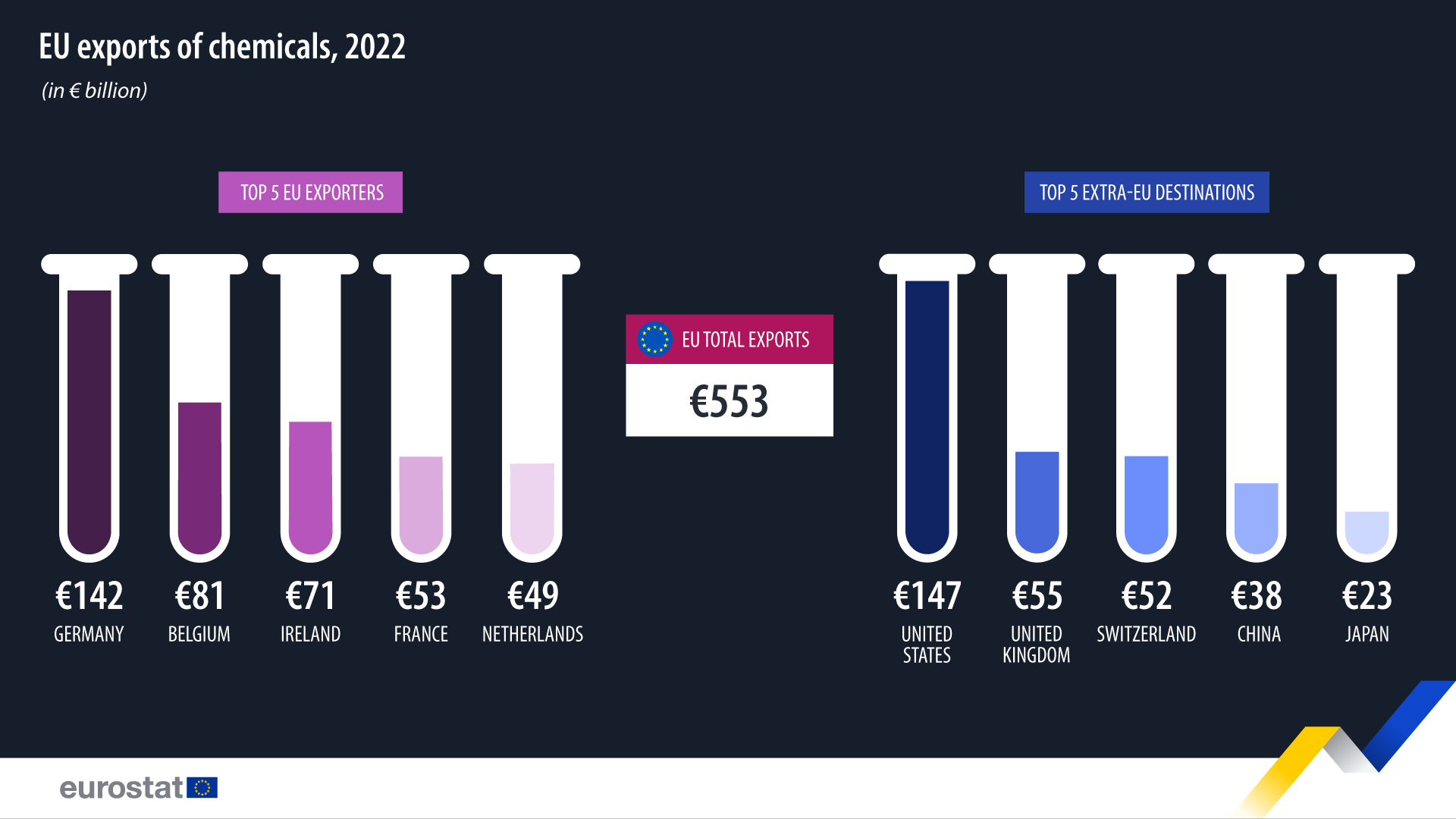EU chemical and pharmaceutical trade: robust growth

In 2022, EU chemical (including pharmaceutical) extra-EU exports reached a record high of €553 billion, fueled by increasing prices. This was an increase of more than one-fifth (+21%) compared with the value of exports in 2021 (€458 billion).
The value of chemical imports from non-EU countries into the EU was significantly lower, but also hit a record high of €363 billion, an increase of almost a third (+33%) compared with 2021 (€272 billion).
Top exporter: Germany
In 2022, among the EU members, the top 5 exporters were Germany (€142 billion), Belgium (€81 billion), Ireland (€71 billion), France (€53 billion) and the Netherlands (€49 billion).
The main extra-EU destinations were the United States (€147 billion), the United Kingdom (€55 billion), Switzerland (€52 billion), China (€38 billion) and Japan (€23 billion).
Source dataset: DS-018995
Regarding chemical imports, Germany was the largest importer from non-EU countries in 2022 (€72 billion), followed by the Netherlands and Belgium (each €53 billion), Italy (€30 billion), Spain and France (each €28 billion).
For more information
- Statistics Explained article on international trade in chemical products
- Thematic section on international trade in goods
- International trade in goods – a statistical picture
- Statistics 4 Beginners on international trade in goods
- Database on international trade in goods
Methodological notes:
- ‘Chemicals’ consist of SITC Rev. 4 ‘Chemicals and related products’:
- 51 - Organic chemicals
- 52 - Inorganic chemicals
- 53 - Dyeing, tanning & colouring materials
- 54 - Medical & pharmaceutical products
- 55 - Essential oils, resinoids and perfume materials
- 56 - Fertilisers (other than those of group 272)
- 57 - Plastics in primary forms
- 58 - Plastics in non-primary forms
- 59 - Chemical materials and products
- As of January 2021 onwards, data on trade with the United Kingdom is based on a mixed concept. As per the Withdrawal Agreement Protocol on Ireland / Northern Ireland, for trade with Northern Ireland, the statistical concepts applicable are the same as those for trade between the EU countries. On the other hand, for trade with the United Kingdom (excluding Northern Ireland), the same statistical concepts are applicable as for trade with any other extra-EU partner country. For these reasons, data on trade with the United Kingdom are not fully comparable.
- Dutch trade flows are over-estimated because of the so-called ‘Rotterdam effect’ (or quasi-transit trade): that is goods bound for other EU countries arrive in Dutch ports and, according to EU rules, are recorded as extra-EU imports by the Netherlands (the country where goods are released for free circulation). This in turn increases the intra-EU flows from the Netherlands to those Member States to which the goods are re-exported. Although to a lesser extent, trade figures of other Member States like Belgium or Luxembourg may also be overestimated due to quasi-transit.
If you have any queries, please visit our contact us page.

